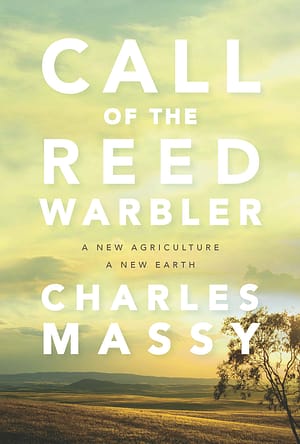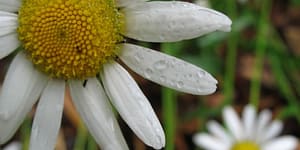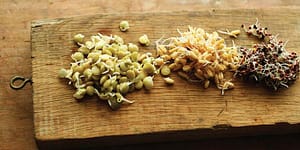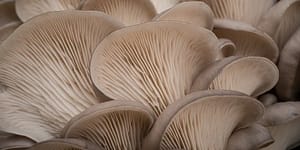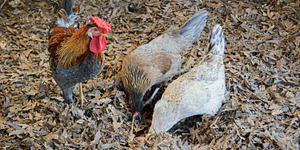Healthy Culture, Society and Mother Earth: Agri-Culture

In Call of the Reed Warbler, Charles Massy’s stunning observations of interaction between nature, culture, and society is nothing short of eye opening.
“By arrogantly having placed ourselves outside the functional operating parameters of Earth’s systems, we now see nature and the Earth as separate from us and so just available for use – while all the time the panacea for our ills and insecurities is seen to be endless consumption and growth.”
The following excerpt is from Call of the Reed Warbler by Charles Massy. It has been adapted for the web.
It is late December, a time of intense, baking heat. I go for a long walk across our landscape, where a once green, diverse grassland sward smells like freshly cut hay as the plant sugars dry.
Listening to the morning bird chorus, which is overridden by the warbling of magpies, I contemplate the connections and interconnections of our world on the farm.
Flowering trees and shrubs, insect hatchings, temperature, atmospheric pressure, wind currents, aerial odour streams, and thousands of other factors that trigger and enable this ancient movement of birds, insects and other creatures across our landscape.
By mid-morning, on the older parts of the landscape, large patches of vanilla lilies unfurl their pastel flowers beneath candlebark and snow gums. Around them, bees buzz, bathed in rich scent, while orbs of rich yellow button daisies present their curled silver-side leaves to the thirsty sun.
Beyond them, open grasslands are stippled with white flecks of flowering Danthonia. This is butterfly, insect and arthropod time.
A common brown butterfly among the candlebarks falls like a dead gum leaf, twisting to earth – only to suddenly spread wings and glide away, while painted ladies delicately flit from flower to flower.
Other insects fill the air: the subdued hum of flies; the loud buzz of demonic, single-minded Christmas beetles; the quavering thrum of grass cicadas.
The clustering of lost bogong moths on a fence post; and the slow waking of black prince cicadas, red-eyed and torpid in the morning, but then, as they warm, their full foot-song beginning in scratchy fashion and then rising en masse into a deep, humming buzz that resonates in the eucalypt canopies.
On the pads of sheep tracks, black wasps choose this time to bore nesting holes in hard ground, while under the shaded cover of huge granite slabs, ant lions – the personification of patience – dig their inverted cones of slippery death in the dust, as they lie invisibly in wait for careless prey.
Returning this morning, I watched a blue-tongue lizard swim across the edge of a dam, while high above a wedge-tail circled slowly in the washed-blue sky.
And close by, as I dissected the grasslands, rosellas hung sideways off thistles, knapping their seed, and further on a wagtail rode a sheep’s back, plucking gently for nest fibres.
Finally, after breasting the hill and seeing the homestead and beyond it a broad, healthy, rolling landscape of bronzed patches mixed with khaki, yellows, whites and dun browns, I was prompted to ask myself, ‘What is it that makes a landscape?
And how, in the face of Australian summers that now, year by year, seem to be fiercer and more desiccating, do I continue to manage and regenerate this extraordinary world around me?’

Around 150 years of continuous grazing and burning prior to new owners in 2006 led to compaction, bare ground and erosion (and loss of profitability) at the Pearce family’s 4000-hectare subtropical ‘Bannockburn’ cattle station near Rockhampton, Queensland. Photo by Catriona Pearce.
The answers, I know now, reside in our heads – for the latest global and national records confirm both my gut-feel and also some plain indicators.
Here on our landscape, for example, for the last five years or so our native corkscrew grass now regularly ripens three weeks earlier than previously.
Because, yes, the summers are hotter, the heat fiercer, and the drying more intense and rapid.
And this is just one of a number of key indicators of a world changed by humans.
It seems incredible that the 1.3-kilogram mass of brain matter, tissue and neurons within our heads is now in the driving seat of a vehicle that can take us for a frightening plunge over the cliff’s edge or else carefully steer us away from the abyss.
Yet the overwhelming majority of the human species is not aware of the imminent danger, and the reasons for this are twofold.
On the one hand, billions of people face a daily struggle for survival in the developing world.
On the other hand, the vast majority of us who live in the developed world are too busy pursuing our consumptive lifestyles to care or become informed about the greatest crisis to ever confront humanity.
Even more worrying is the fact that for those few of us who have been appraised of the life-threatening consequences of our ongoing human behaviour and are in a position to do something about it, many are at best sceptical (despite the overwhelming evidence) and at worst downright dismissive of the unpalatable and inconvenient truth.
At the same time, those of us in the best position to be well informed – our political and business leaders – carry on as if they live in a parallel but removed universe, so deeply are they embedded in the core ruling precepts of the Mechanical mind.
By arrogantly having placed ourselves outside the functional operating parameters of Earth’s systems, we now see nature and the Earth as separate from us and so just available for use – while all the time the panacea for our ills and insecurities is seen to be endless consumption and growth.
Such is the power of both the individual and collective human mind. However, to emphasise the optimistic side of this factor, there is a faint but strengthening glimmer of hope: a gathering insurgency against the above stupidity.
This rebellion is coming from those closest to Mother Earth: the farmers. But it is also coming from their urban cousins who seek better health, tastier and more ‘wholesome’ food, a closer connection to Earth, and a life lived more simply and meaningfully in a sharing community.
That is why the stories told in this book are cause for optimism, for they are just a minute selection of many good works being done across the globe to regenerate Earth.
For me, when I think about the big-picture stuff and the overwhelmingly important role of self-organisation in our complex systems, these acts of agricultural and urban-food and lifestyle defiance against the ruling Mechanical mind are more than acts of insurgency.
They are the emergent properties that enable all self-organising systems to direct themselves towards ongoing survival and life.
Recommended Reads
Recent Articles
Oxeye daisies are one of the most important plants for pollinators including beetles, ants, and moths that use oxeye daisies as a source of pollen and nectar. Instead of thinking about removing a plant like oxeye daisy, consider how you can improve the fertility and diversity of habitat resources in your home landscape, garden, or…
Read MoreSo you want to start reaping your harvest, but you’re not sure where to start? Learn how to break down the options of harvesting tools!
Read MoreWhat’s so great about oyster mushrooms? First, you can add them to the list of foods that can be grown indoors! They are tasty, easy to grow, multiply fast, and they love a variety of substrates, making oyster mushrooms the premium choice. The following is an excerpt from Fresh Food from Small Spaces by R. J.…
Read MoreEver heard the phrase, “always follow your nose?” As it turns out, this is a good rule of thumb when it comes to chicken manure. Composting chicken manure in deep litter helps build better chicken health, reduce labor, and retain most of the nutrients for your garden. The following is an excerpt from The Small-Scale Poultry…
Read More
